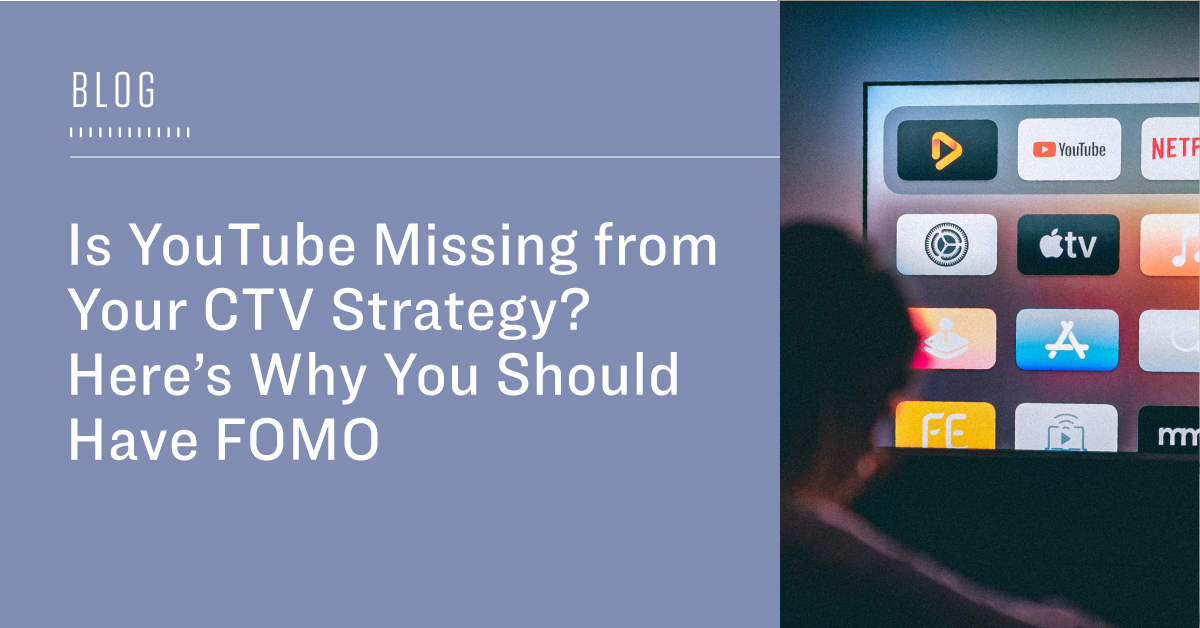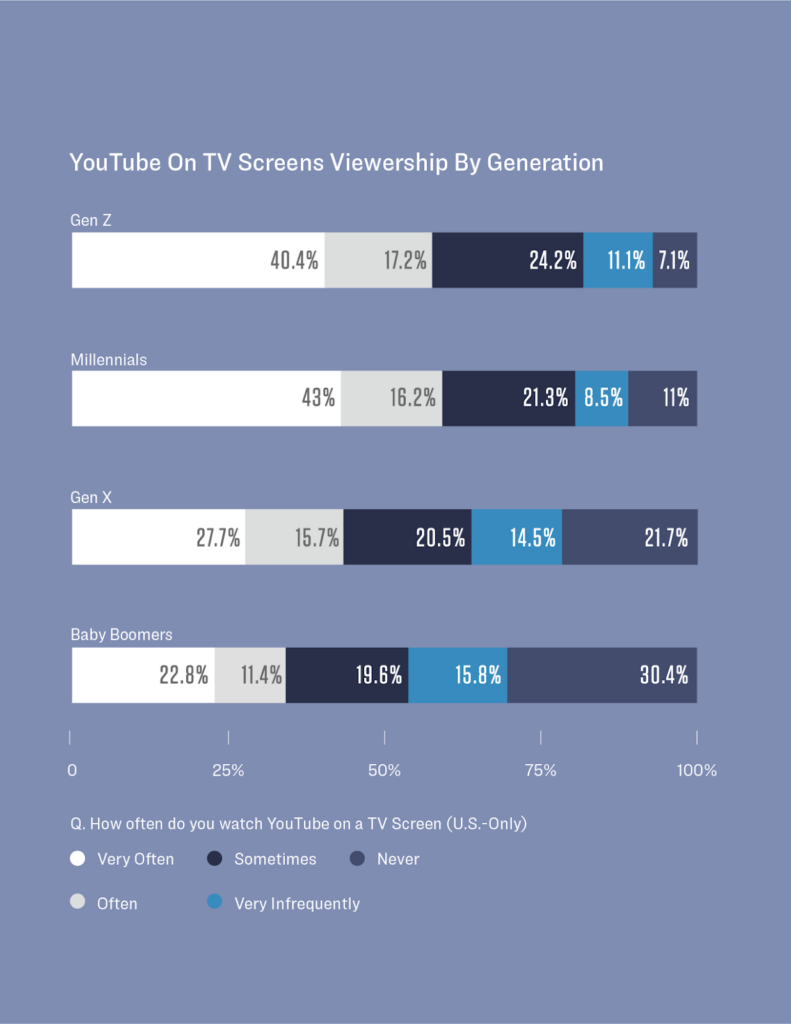
Is YouTube Missing from Your CTV Strategy? Here’s Why You Should Have FOMO
What is YouTube CTV and how is it different from YouTube TV?
What exactly is YouTube CTV? YouTube CTV is a version of YouTube optimized for TVs and other large screens. It can be accessed through smart TVs, streaming devices like Apple TV and Roku, and even gaming consoles. Once connected, viewers can browse and watch YouTube videos just as they would on their computer or mobile device.
On the other hand, YouTube TV is a vMVPD (virtual multichannel video programming distributor) digital subscription service that allows viewers to access Linear TV content via CTV devices.
Simply put, YouTube CTV allows consumers to watch the YouTube app on the big screen. At the same time, YouTube TV provides more of a Linear TV experience, including 85+ top entertainment channels, news, live sports, etc., without a cable subscription.
While both are important to your strategy, each have their unique buying process, targeting options, and best practices. Today, we’re going to focus on the importance of YouTube CTV and why you should start investing.
Why a Winning CTV Strategy Starts with YouTube and Extends Across Platforms
With video and TV consumption rapidly changing, it’s no surprise that brands must be present across CTV platforms to provide an omnichannel experience for consumers. In fact, 92% of households are reachable by CTV advertising.
Many of today’s CTV strategies focus on platforms such as Hulu, Netflix, Roku, and Amazon. While important, those platforms miss out on a significant percentage of CTV viewership: YouTube. Read on to learn why Pixability believes a winning CTV strategy starts with YouTube.
1. YouTube drives incremental reach to maximze your CTV investments
YouTube entered the CTV scene in 2018 and has ridden the streaming wave with continued growth in viewership. According to Nielsen, YouTube CTV has become the top CTV platform for share of screen viewing minutes. In addition, Nielsen does not include YouTube TV streaming hours in this calculation, further solidifying YouTube CTV’s lead.

YouTube CTV is also a great platform to drive incremental reach for advertisers looking to influence Millennials and Gen Z audiences, which combined hold a purchase power of more than $165B.
Younger generations watch YouTube on TV Screens, with more than 90% of Gen Z and Millennial audiences saying they use TV screens to watch the platform according to proprietary Pixability research. As these audiences cut the cable cord — or never subscribe in the first place — this is a great opportunity for advertisers to reach valuable demographics that they can’t replicate through linear TV.

2. Mobile devices are no longer the only way to reach YouTube viewers
While viewers still grab their phones when watching YouTube majority of the time, for the first time ever, nearly half of all YouTube viewing occurs on TV screens, up from 30% in 2020. This number will continue to increase, reducing mobile viewing to less than 50% by 2024.

3. The viewing experience on YouTube and CTV continue to converge
The expected viewing experience across YouTube and CTV is more similar than you’d think.
- In most cases, viewers watch both channels in a laid-back state on the biggest screen in the house. Additionally, they proactively search for content they want to watch on-demand.
- Premium content on YouTube has grown, and more people turn to content such as sports, feature-length documentaries, and documentaries. According to proprietary Pixability research, we’ve seen:
- +65% watch time on TV screens of sports videos
- +250% watch time on TV screens of feature length-movies
- +350% watch time on TV screens of documentaries
- It’s easy to mimic the traditional CTV ad experience on YouTube CTV by leveraging non-skip 30-second ads. As a result, viewability typically increases. Advertisers have already seen success with this approach, as according to Pixability’s research, TV Screens made up 28% of Non-Skip impressions in Q1 2022 and grew 71% YoY to reach 48% impression share in Q1 2023.

With consumers spending more time on YouTube CTV than any other streaming platform, this gives advertisers a first-hand look into how viewers consume and engage with CTV content. When advertisers strategically buy YouTube and CTV together, advertisers can learn from their consumers on YouTube and apply those audience insights across CTV platforms.
YouTube CTV has been a game-changer for consumers in the world of video streaming, and when incorporated into an advertiser’s CTV strategy, it’s a game-changer for brands as well. If you want to learn about how Pixability can help you tap into YouTube CTV, reach out today!